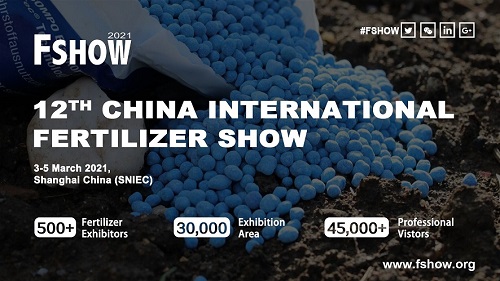
Exhibition time: 17-19 March, 2026 Shanghai, China
 中文
中文

Exhibition time: 17-19 March, 2026 Shanghai, China
 中文
中文
The challenge of increasing productivity in world agriculture definitely involves the incorporation of new technologies into its production processes, which allow improving the yield of crops and, at the same time, reducing the costs of inputs and labor.

Agricultural or agricultural innovation uses a term to group the new emerging technologies called “AgTech”. This concept includes ten innovations that, according to the projections of world experts in the field, will have a strong impact on the development of the agricultural sector, promoting the growth of its productivity.
1. Sensors, Big Data and Management Software
This innovation or AgTech is based on sensorization for the monitoring of agricultural variables or that influence the agricultural cycle, the processing of large volumes of information and a number of App's, so that farmers can make better decisions regarding management of their crops.
Data-driven farming, or smart farming, is here, and in the near future we can only hope that it will continue to evolve and improve land management.
2. Robotics
Robots for agricultural applications in the world, are already an important reality and in development in recent years; from expert robots in sowing, fertilization and plant protection processes, to harvesting robots. The use of robots allows relevant increases in yields, reduction of costs of productive inputs and labor.

Within the family of robots can be included drones, which are being used in the agricultural industry for various functions; from disease diagnosis, to pollination processes, to livestock control and fire prevention. Drones are a technology whose performance-price ratio increases at accelerated rates, therefore it is to be expected that their use will also intensify.
3. Autonomous tractors
This technology allows the farmer of a farm to control the tractor from a computer or a tablet, with simple instructions, programming his tasks so that it later operates autonomously, while the farmer can dedicate his time to other tasks on the farm. The operation of these tractors is based on real data collected autonomously by the tractor, through sensors or provided by external systems, which allows them to make much more precise decisions, in real time, minimizing risks and costs.

4. Biotechnology and Biological Big Data
Agricultural biotechnology is not exactly new to agriculture. Since ancient times, farmers have selected the best species, both animal and vegetable, which gave productive, qualitative and quality advantages to the products. On the other hand, Biological Big Data allows genetic and molecular discoveries in plant and animal species at a speed never known before. For example, the discovery of genes that directly intervene in specific biological processes of crops, increasing their resistance, improving their productivity and the quality of their fruits.

5. Shared economy
The UBER phenomenon has reached agricultural machinery. In Europe, numerous platforms have emerged that allow farmers to rent machinery to other farmers for hours, days or weeks, when they are not using them.
A simple idea, which allows both parties to benefit: some because they get the most out of their stopped machine, and others because they can incorporate technology into their crops without making large investments.
6. Vertical farms for the cities of the future
This technology is based on the idea of transforming urban spaces, of large cities, into high productivity gardens. These vertical, hyper-robotized and ultra-productive farms have been operating in Europe since 2016, proving that this idea is fully feasible.
On the other hand, these farms are characterized by: low human labor, absolute control of all cultivation parameters, maximum food safety, high technology and incredible productivity.

7. Cellular agriculture and livestock
Complementing the idea of vertical farms, the concept of a self-sufficient smart city arises, where vertical farms put vegetables and laboratories put animal protein.
This concept began to sound strongly when the German scientist Mark Post, created in 2013 the first hamburger "in vitro". From here, numerous startups have emerged in the United States and Europe that have launched into investigating how to produce meat and dairy products without resorting to livestock. In fact, companies like Impossible Foods or Cultured Meat are already developing laboratory meat.
8. Satellite technology
NASA is betting on satellite technology to predict droughts and thus help farmers; For its part, the European Space Agency is developing applications based on the same technology to monitor agricultural droughts and predict harvests.
Numerous applications have been developed that allow combining NASA images and information with knowledge from other information sources, such as the "US Department of Agriculture" and the "United States National Oceanic and Atmospheric Administration."
9. More natural inputs and agriculture
Biological control emerges as an alternative to pesticides and chemical substances for pest control, mainly due to the fact that consumers in developed countries have begun to be environmentally conscious and ask farmers for more natural and sustainable products.
This trend, in practice, translates into the substitution of chemical-based fertilizers for natural-origin fertilizers; developing natural solutions to combat pests, using substances present in nature or biological control.
10. E-Commerce agri-food
One of the trends that has developed with the greatest strength and investment during 2016 is the agri-food e-commerce, where companies and startups generate sales portals and distribution chains that directly connect producers with final consumers. This allows fresh products to reach the consumer at very competitive prices. In 2016, Amazon Fresh arrived in Europe to mark the new evolutionary step of Agrifood e-Commerce.
From https://laverdadnoticias.com
